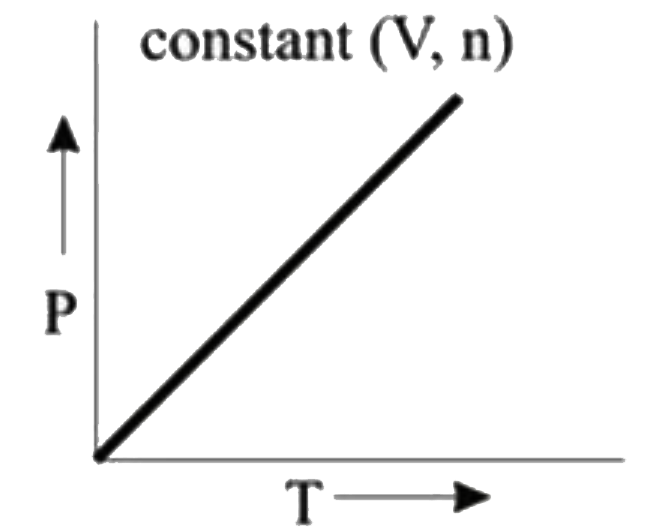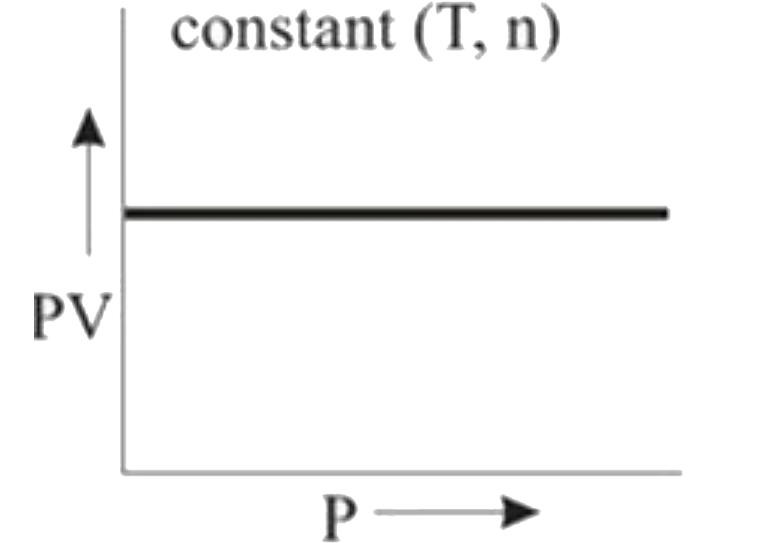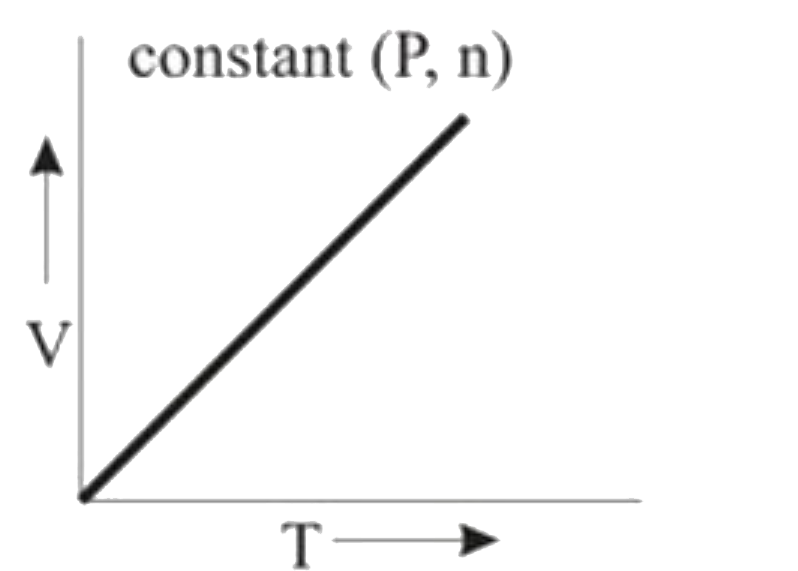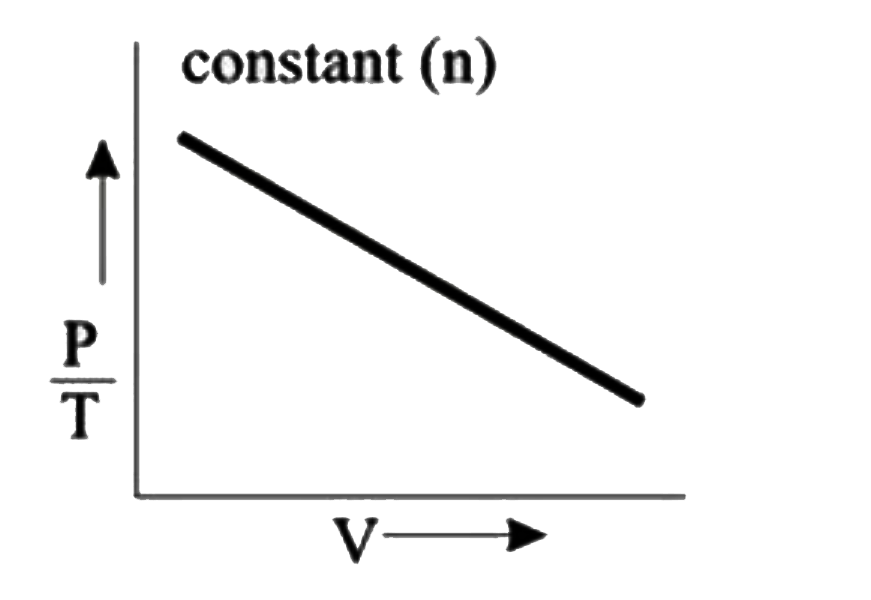Which of the following graphs show most significant deviation from ideal gas behaviour ?




The correct Answer is:D
To determine which graph shows the most significant deviation from ideal gas behavior, we can analyze each option based on the relationships defined by the ideal gas law, PV=nRT.
1. Understanding Ideal Gas Behavior:
The ideal gas law states that for an ideal gas, the relationship between pressure (P), volume (V), temperature (T), and number of moles (n) is given by the equation PV=nRT. An ideal gas behaves perfectly according to this equation under all conditions.
2. Analyzing Each Graph:
- Graph 1 (P vs. T):
- This graph keeps volume (V) and number of moles (n) constant. According to the ideal gas law, if V and n are constant, P is directly proportional to T. Therefore, this graph will be a straight line, indicating no deviation from ideal behavior.
- Graph 2 (PV vs. T):
- Here, T and n are constant. Since PV=nRT, if T and n are constant, then PV is also constant. This results in a horizontal line (parallel to the x-axis) when plotted against T, indicating ideal behavior.
- Graph 3 (V vs. T):
- In this case, P and n are constant. According to the ideal gas law, V is directly proportional to T. Thus, this graph will also be a straight line, showing no deviation from ideal behavior.
- Graph 4 (P/T vs. V):
- For this graph, n is constant. From the rearranged ideal gas law P/T=nR/V, we see that P/T is inversely related to V. This means that if we plot P/T against V, we should expect a hyperbolic curve. However, if the graph shows a straight line, it indicates a significant deviation from ideal behavior.
3. Conclusion:
Among the four graphs analyzed, Graph 4 shows the most significant deviation from ideal gas behavior because it does not conform to the expected hyperbolic relationship between P/T and V.
Final Answer:
The graph that shows the most significant deviation from ideal gas behavior is Graph 4.
The ideal gas law states that for an ideal gas, the relationship between pressure (P), volume (V), temperature (T), and number of moles (n) is given by the equation PV=nRT. An ideal gas behaves perfectly according to this equation under all conditions.
- Graph 1 (P vs. T):
- This graph keeps volume (V) and number of moles (n) constant. According to the ideal gas law, if V and n are constant, P is directly proportional to T. Therefore, this graph will be a straight line, indicating no deviation from ideal behavior.
- Graph 2 (PV vs. T):
- Here, T and n are constant. Since PV=nRT, if T and n are constant, then PV is also constant. This results in a horizontal line (parallel to the x-axis) when plotted against T, indicating ideal behavior.
- Graph 3 (V vs. T):
- In this case, P and n are constant. According to the ideal gas law, V is directly proportional to T. Thus, this graph will also be a straight line, showing no deviation from ideal behavior.
- Graph 4 (P/T vs. V):
- For this graph, n is constant. From the rearranged ideal gas law P/T=nR/V, we see that P/T is inversely related to V. This means that if we plot P/T against V, we should expect a hyperbolic curve. However, if the graph shows a straight line, it indicates a significant deviation from ideal behavior.
Among the four graphs analyzed, Graph 4 shows the most significant deviation from ideal gas behavior because it does not conform to the expected hyperbolic relationship between P/T and V.
The graph that shows the most significant deviation from ideal gas behavior is Graph 4.
Similar Questions
Knowledge Check
- Question 1 - Select One
Which of the following solutions shows positive deviation from Raoult's law ?
AAcetone + AnilineBAcetone + EthanolCWater+ Nitric acidDChloroform + Benzene
Any gas shows maximum deviation from ideal gas behaviour at
View SolutionWhich of the following graphs is inconsistent with ideal gas behaviour ? (Assume n = constant)
View SolutionWhich of the following shows negative deviation from Raoult's law?
View SolutionFor a gas deviation from ideal behaviour is maximum at :
View SolutionWhich of the following graph is incorrect for an ideal gas?
 View Solution
View SolutionWhich of the following show amphoteric behaviour?
View SolutionWhich of the following liquid pairs shows a postive deviation from Raoult's law ?
View Solution

